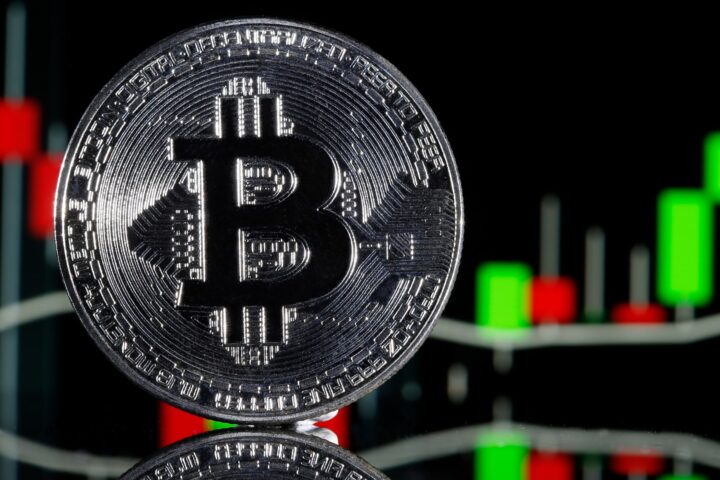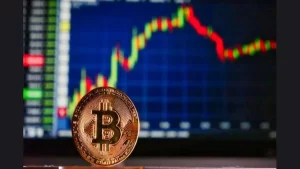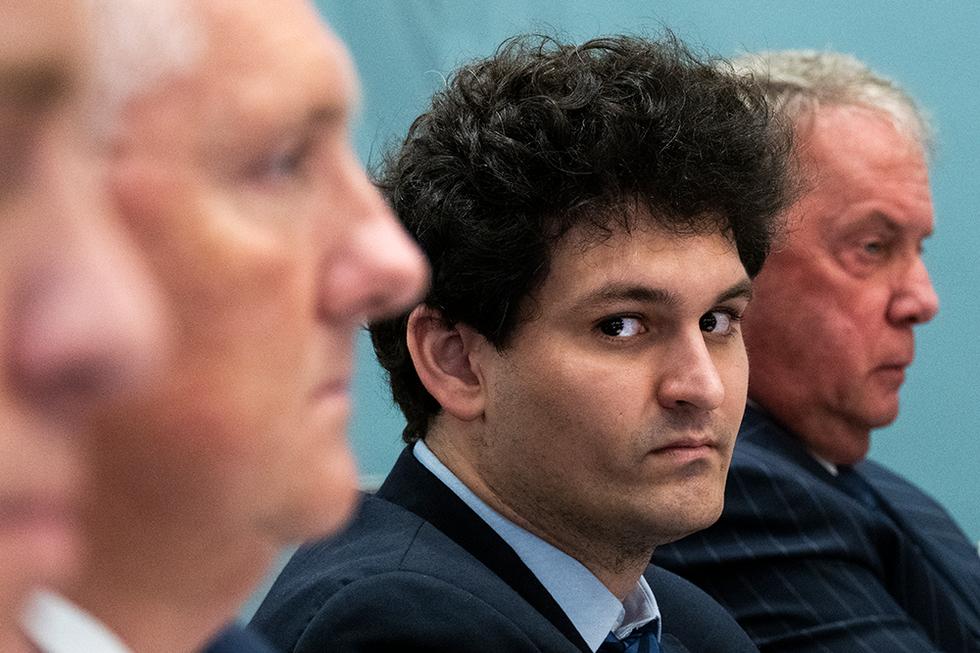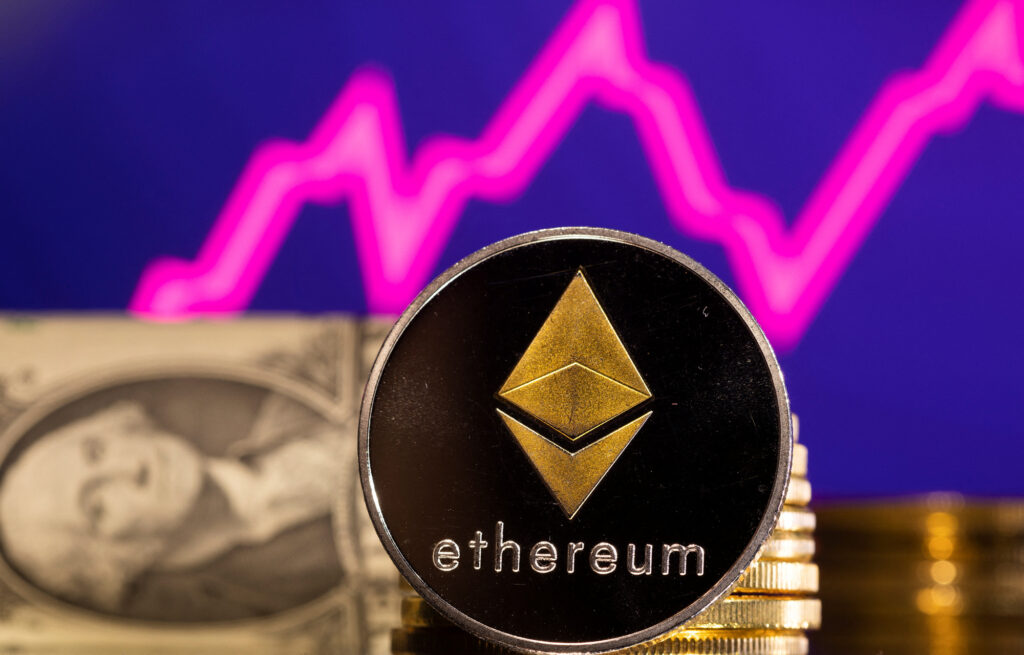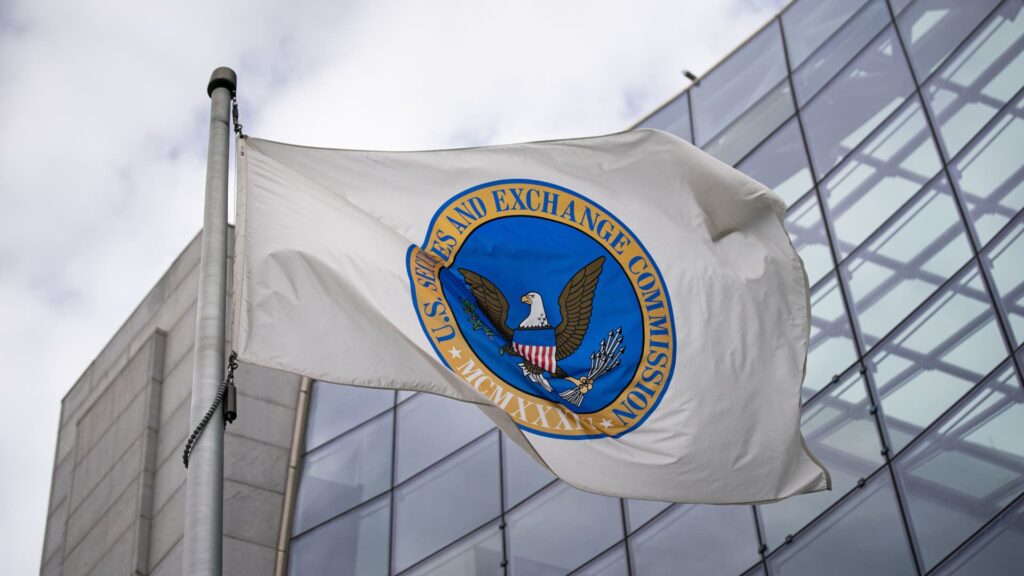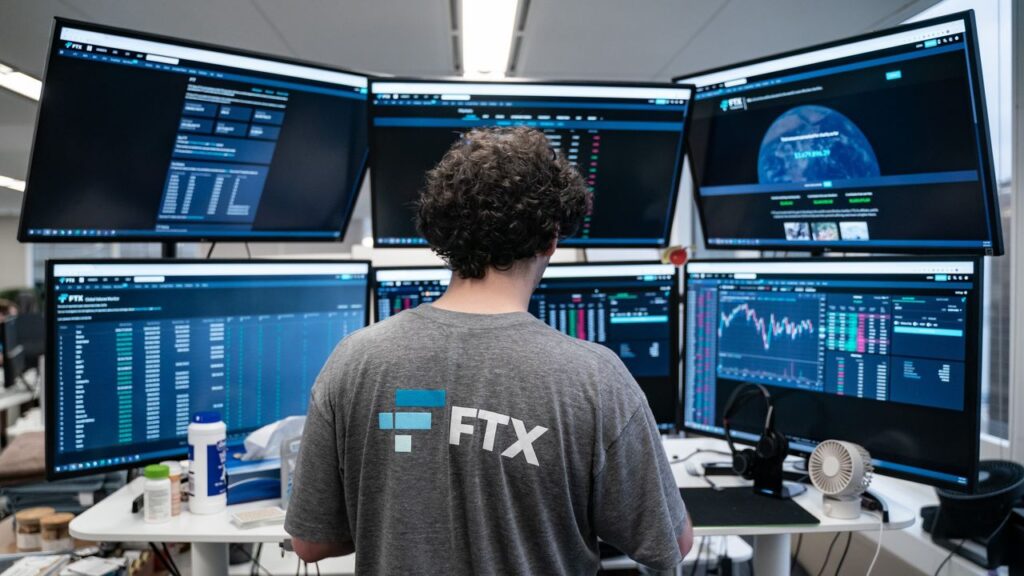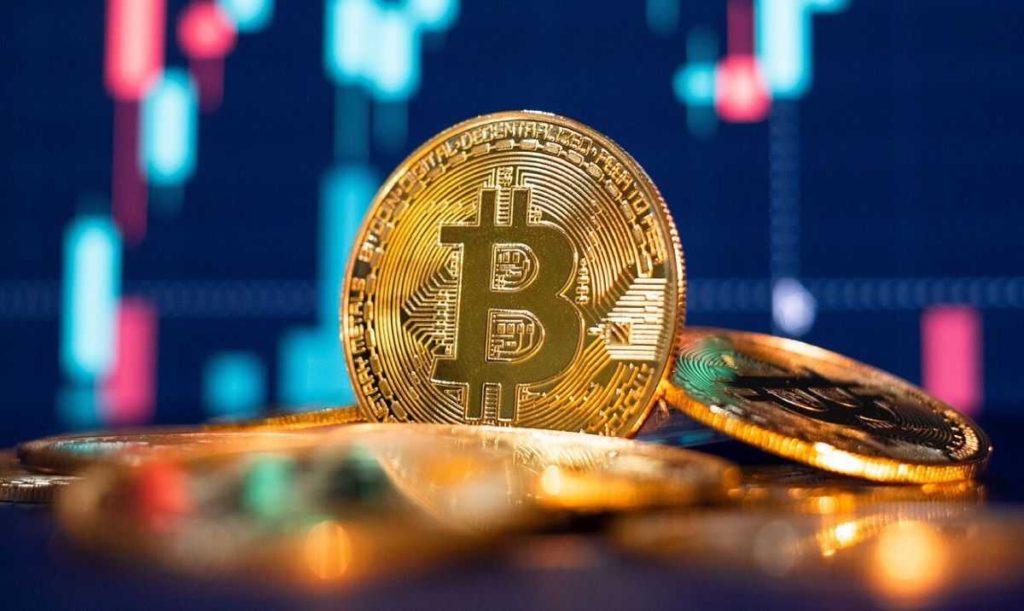FTX and FTX.US, both embroiled in bankruptcy, have taken a significant step toward resolving their customer asset disputes.
A proposed settlement has been reached between FTX creditors and debtors, potentially returning over 90% of assets to customers by the second quarter of 2024.
On October 17, FTX debtors announced a “major milestone” in their Chapter 11 case following extensive discussions with various parties, including the unsecured creditors’ committee, non-U.S. customers, and class action plaintiffs, all related to customer property disputes.
While an information-only notice of the proposed settlement was filed with a Delaware-based U.S. bankruptcy court on October 16, the official filing for court approval is expected by December 16.
Central to the amended plan is the “shortfall claim,” which estimates that customers of FTX.com and FTX.US will collectively receive approximately 90% of the available assets.
This claim is valued at around $8.9 billion for FTX.com and $166 million for FTX.US.
Pending approval, these funds are anticipated to be distributed by the end of the second quarter of 2024.
FTX CEO and Chief Restructuring Officer John J. Ray III expressed satisfaction with the settlement terms, stating that it has transformed what could have been a near-total loss for customers, especially given the challenging financial circumstances.
READ MORE:California Governor Approves Stricter Cryptocurrency Regulations for 2025
The plan divides assets into three pools, specifically designated for FTX.com customers, U.S. customers, and a general pool of other assets.
However, only the first two groups are included in the shortfall claim, suggesting that customers of both exchanges will not receive full payments, with FTX.com customers likely to bear a higher percentage of losses.
A noteworthy aspect of the proposed plan addresses customers who withdrew over $250,000 from the exchange within nine days of bankruptcy.
These customers may face a 15% reduction in their claims. However, claims under $250,000 will remain unaffected.
FTX debtors clarified that eligible customers with preference settlement amounts below $250,000 during the nine-day period would receive the settlement without any claim reduction.
Additionally, as part of the amended plan, FTX may exclude insiders, affiliates, and customers with knowledge of the misuse of customer deposits and corporate funds from the settlement.
Notably, former FTX CEO Sam Bankman-Fried is currently facing a fraud trial linked to FTX’s bankruptcy last November.
The outcome of this trial could also impact the ongoing bankruptcy proceedings.
Other Stories:
Grayscale Bitcoin Trust (GBTC) Discount Narrows to Two-Year Low Amid Spot Bitcoin ETF Optimism
FTX Estate’s Bold Solana Staking Signals Strong Crypto Commitment
Latin America’s Strong Preference for Centralized Exchanges in Crypto Trading
FTX co-founder, Sam Bankman-Fried, has reached out to a United States judge in a plea for long-release Adderall, citing difficulties in maintaining concentration during his ongoing criminal trial.
Bankman-Fried’s legal team submitted a letter to New York District Judge Lewis Kaplan on October 15th, requesting permission for him to take a “12-hour extended-release 20mg dose of Adderall” before he’s transported to the trial on October 16th.
In their letter, the lawyers emphasized that the absence of the prescribed stimulant during trial hours has severely impacted Bankman-Fried’s ability to focus at his usual level.
As the crucial moments of his defense strategy and the decision of whether he will testify loom closer, there are growing concerns that the FTX founder won’t be able to actively participate in presenting his defense without his medication.
The letter revealed that despite the absence of medication, Bankman-Fried has been making diligent efforts to remain focused during the trial.
However, even if he is granted the requested medication, there remains uncertainty about whether the extended-release dose will be effective.
To address this situation, Bankman-Fried’s legal team proposed two potential solutions to Judge Kaplan.
Firstly, they requested that the trial be paused for one day on Tuesday, October 17th, if Bankman-Fried cannot receive the long-release dose or if it proves ineffective.
READ MORE:MetaMask Temporarily Removed from Apple’s App Store
This would allow time to find an alternative solution for the remainder of the trial. Alternatively, they asked for permission to provide Bankman-Fried with his prescription of Adderall at the District Court during the trial.
The lawyers noted that they had attempted to resolve this issue with the Bureau of Prisons but had received no response to their five attempts to contact them between October 5th and October 12th.
Judge Kaplan had previously approved a motion to allow Bankman-Fried access to Adderall and anti-depressant medication while in prison on August 14th.
This decision was based on his history of major depressive disorder and attention deficit hyperactivity disorder (ADHD) and his psychiatric care since early 2019.
However, in an August 22nd hearing, Bankman-Fried’s legal team had complained about his lack of access to Adderall, stating that he had not received the medication for 11 days.
As Bankman-Fried’s criminal trial enters its third week, various witnesses, including former associates and his ex-girlfriend, have provided testimonies. Bankman-Fried has pleaded not guilty, maintaining his innocence throughout the trial.
Other Stories:
Secret Audio Exposes Alameda Research’s Misuse of FTX User Funds, Unveiling Shocking Details
SEC Opts Not to Appeal Ruling Favoring Grayscale’s Bitcoin ETF Application
Bitcoin Holds Steady at $26,800 as SEC’s Grayscale Decision Looms
Latin America, according to a recent report by blockchain analytics firm Chainalysis, exhibits a strong preference for centralized exchanges (CEXs) over decentralized exchanges (DEXs) when it comes to cryptocurrency trading.
Despite having the seventh-largest crypto economy globally, Latin America lags behind regions like the Middle East and North America (MENA), Eastern Asia, and Eastern Europe.
The report, published on October 11, reveals that the crypto community in Latin America has a distinct leaning towards CEXs.
Chainalysis notes, “Latin America shows the highest preference for centralized exchanges of any region we study, and tilts slightly away from institutional activity compared to other regions.”
In some countries within the region, this preference for CEXs is even more pronounced when compared to the global average.
Worldwide, 48.1% of crypto users prefer CEXs, 44% opt for DEXs, and 5.9% engage in other decentralized finance (DeFi) activities.
However, in Venezuela, an astonishing 92.5% of users prefer CEXs, while only 5.6% favor DEXs.
The report attributes Venezuela’s strong adoption of crypto to its unique circumstances, particularly a “complex humanitarian emergency.”
READ MORE:Why BFG Might Be a Hidden Gem of the Next Bull Run?
During the COVID-19 pandemic in 2020, cryptocurrency played a crucial role in providing direct assistance to healthcare professionals in the country.
Traditional payment methods were impractical due to the government’s reluctance to accept international aid for political reasons.
Colombia also exhibits a significant preference for CEXs, with 74% of users favoring them over DEXs, which account for just 21.1% of preferences.
Meanwhile, Argentina leads in terms of cryptocurrency transaction volume in Latin America, with an estimated $85.4 billion received in a 12-month period ending on July 1.
However, the country has faced regulatory challenges, with its central bank banning payment providers from offering crypto transactions to reduce exposure to digital assets.
This move aimed to subject fintech companies to the same regulations as traditional financial institutions.
Despite these challenges, three Latin American countries secured positions in the top 20 ranks on Chainalysis’ Global Crypto Adoption Index.
Brazil holds the ninth position, followed by Argentina at 15th and Mexico at 16th.
The top position globally was claimed by India, with Nigeria and Vietnam ranking second and third, respectively.
Other Stories:
Secret Audio Exposes Alameda Research’s Misuse of FTX User Funds, Unveiling Shocking Details
SEC Opts Not to Appeal Ruling Favoring Grayscale’s Bitcoin ETF Application
Bitcoin Holds Steady at $26,800 as SEC’s Grayscale Decision Looms
On October 14, 2023, Ethereum wallet MetaMask experienced a temporary removal from Apple’s App Store, sparking concerns within the cryptocurrency community about the possibility of a permanent expulsion from the marketplace.
MetaMask, a popular wallet known for its integration with various Web3 decentralized applications (DApps), boasts a user base of over 30 million individuals worldwide.
Reports emerged on that day, indicating that the MetaMask app had vanished from the App Store, leaving Apple users unable to download it directly from the MetaMask website.
However, MetaMask promptly reassured its users that the situation did not stem from any security breaches or malicious activity.
A MetaMask spokesperson stated, “We’re aware that MetaMask isn’t currently available for download on the App Store.
This issue is unrelated to any malicious activity. Our dedicated team is working diligently to resolve it as quickly as possible.
Importantly, this is not a security concern, and there is no compromise or action required on users’ part.
Additionally, it’s not related to the app’s functionality.”
READ MORE: Secret Audio Exposes Alameda Research’s Misuse of FTX User Funds, Unveiling Shocking Details
The likely cause behind MetaMask’s removal was Apple’s stringent service policies, which prohibit apps from running “unrelated background processes,” including cryptocurrency mining.
MetaMask expressed confidence that this removal was temporary and expected the app to return to the App Store shortly.
They also urged users to report any fake MetaMask apps that might have appeared during the removal.
This incident marked the second time that MetaMask faced challenges from major tech marketplaces.
In December 2019, the company encountered suspension from Google Play’s app store, with allegations of violating the platform’s financial services guidelines. Google cited its policy against cryptocurrency mining on mobile devices and rejected MetaMask’s appeal to reverse the ban.
Apple’s guidelines, which necessitate app developers to share 30% of transaction revenues with the platform, pose another obstacle for crypto firms.
This requirement has been a point of contention for companies, particularly those that wish to provide iOS users with the capability to purchase nonfungible tokens (NFTs) and engage in cryptocurrency-related activities.
In conclusion, while MetaMask’s temporary removal from the App Store raised concerns, the company remains committed to resolving the issue and returning to the platform.
The incident highlights the ongoing challenges faced by cryptocurrency-related apps in complying with the policies of major tech giants.
Other Stories:
SEC Opts Not to Appeal Ruling Favoring Grayscale’s Bitcoin ETF Application
Bitcoin Holds Steady at $26,800 as SEC’s Grayscale Decision Looms
The United States Securities and Exchange Commission (SEC) has reportedly opted not to appeal a recent court ruling in favor of Grayscale Investments.
The decision stems from the U.S. Court of Appeals for the District of Columbia Circuit, which directed the SEC to review Grayscale’s application for a spot Bitcoin exchange-traded fund (ETF).
This development was disclosed in an October 13 report by Reuters, citing an insider source. Bloomberg analysts, too, anticipate that the SEC will refrain from taking the matter to the Supreme Court, although this doesn’t guarantee automatic approval for Grayscale’s ETF application.
If these reports hold true, the SEC is obligated to comply with the court’s August order, requiring a thorough evaluation of Grayscale’s request to transform its Grayscale Bitcoin Trust into a spot Bitcoin ETF. Reuters anticipates that the appeals court will soon provide a detailed mandate outlining how the SEC should execute this ruling.
In response to these unfolding events, Bloomberg ETF analyst James Seyffart expressed his perspective via X (formerly Twitter), suggesting that the SEC is unlikely to appeal further.
READ MORE: Former Engineer Exposes Multi-Million Dollar Scams at Alameda Research Amidst FTX Fraud Trial
Seyffart anticipates that discussions between Grayscale and the SEC will commence in the coming week, with the hope of shedding more light on the next steps.
Looking ahead, Seyffart posits that we may learn in the next week or two about the deadline for the SEC to either approve or deny Grayscale’s spot Bitcoin ETF application.
Should the SEC reject the application, Grayscale would retain the option to appeal, potentially prolonging the process.
Approximately seven spot Bitcoin ETF applications currently await the SEC’s decision, indicating substantial interest in this investment vehicle.
In a separate X post on October 13, Seyffart reiterated his belief in a 90% probability of a spot Bitcoin ETF application receiving approval in January 2024, with specific reference to Cathie Wood’s ARK Invest.
Seyffart and Eric Balchunas, Bloomberg’s senior ETF analyst, previously estimated a 75% likelihood of an ETF application gaining approval in 2023, underscoring the growing momentum and expectations surrounding this evolving financial instrument.
Other Stories:
FTX Collapse Tied to Bankman-Fried’s Financial Maneuvers, Reveals Ex-Alameda CEO
Cardano Founder Equates FTX’s Bankman-Fried to Bernie Madoff Amid Controversial Trial
Alameda Research, the hedge fund sibling of FTX, allegedly lost around $190 million to avoidable scams, as revealed by former engineer Aditya Baradwaj.
On October 12, in a post titled “The Hacks”, Baradwaj, turned whistleblower, stated that Alameda’s rapid operational pace resulted in significant security breaches almost every few months.
One incident described by Baradwaj involves an Alameda trader who mistakenly clicked a malicious link on Google Search, leading to a loss of over $100 million.
The trader was finalizing a decentralized finance transaction at the time. In another instance, Alameda ventured into yield farming on a dubious blockchain, incurring over $40 million in losses.
Baradwaj points out that FTX founder, Sam Bankman-Fried, prioritized speed for Alameda and FTX, often sidelining standard engineering and accounting measures.
Consequently, coding was rarely tested, balance accounting was frequently left unfinished, and security checks for trading were only implemented when deemed necessary.
Disturbingly, sensitive data such as blockchain private keys and exchange API keys were stored in unencrypted files, accessible by multiple employees.
This lax security resulted in a major breach where an old plaintext file containing Alameda’s keys was exposed.
READ MORE: Bitcoin Forecast to Reach $750K-$1M by 2026
This breach alone led to a loss of over $50 million as attackers managed to drain funds from some exchanges.
Baradwaj mentioned that incidents like these weren’t isolated; many more had occurred before his tenure.
The engineer’s revelations come in the backdrop of Alameda and FTX’s downfall in November the previous year.
Baradwaj criticized Bankman-Fried’s justification of dubious actions, labeling them as being driven by the “Effective Altruism” philosophy.
The ongoing fraud trial against Bankman-Fried has seen ex-CEO of Alameda, Caroline Ellison, testify.
Previous days witnessed former associates, Adam Yedidia and Gary Wang, presenting substantial evidence against him. Wang confessed to creating code that granted Alameda virtually unlimited credit from FTX.
Ellison detailed FTX’s alleged fund mingling with Alameda. Despite these claims, Bankman-Fried has pleaded not guilty and asserts his innocence.
Other Stories:
Bitstamp to Temporarily Halt Services in Canada Amid Global Expansion Strategies
NASAA Supports SEC’s Stance on Digital Assets, Challenges Coinbase’s Views on Securities Laws
Weeks before the FTX crypto exchange’s collapse, its former CEO, Sam Bankman-Fried, was navigating tumultuous waters.
His actions were revealed in personal notes from ex-Alameda Research CEO, Caroline Ellison, presented in a New York trial.
Testifying, Ellison recounted that a significant crash in the Terra ecosystem in May 2022 spurred Bankman-Fried to contemplate closing Alameda and soliciting $1 billion in capital from a Saudi Prince recognized for his blockchain gaming investments via Saudi Arabia’s sovereign wealth fund.
Additionally, to boost FTX’s market presence, Bankman-Fried strategized on urging regulators to target rival crypto exchange Binance.
The specifics of this strategy remain undisclosed.
In terms of financing, Bankman-Fried pursued additional funds from BlockFi, having previously borrowed over $660 million.
Other focal points for him encompassed trading Japanese government bonds and purchasing Snap Inc stocks.
A curious note mentioned “Willie being happy”, potentially referring to William MacAskill, believed to be Bankman-Fried’s mentor.
Ellison shared that Bankman-Fried attributed Alameda’s challenges and flawed hedging to her.
She acknowledged that improved hedging could’ve benefited Alameda amidst the cryptocurrency downturn.
However, Alameda’s financial difficulties weren’t solely hedging-related; the company had substantial open-term loans and had drained billions from its FTX credit line.
Open-term loans are unique, allowing borrowers a prepayment choice while granting lenders a call option. By June, lenders began exercising their call options, compelling Alameda to repay vast amounts.
Ellison, following Bankman-Fried’s instructions, settled some of Alameda’s obligations using FTX client funds. By September 2022, Alameda’s debts to FTX had escalated to $13.7 billion, with open-term loans at $1.3 billion.
Compounding the financial maze, Ellison, upon Bankman-Fried’s directive, produced “alternative” financial statements for Alameda’s lenders.
These concealed the company’s fiscal obligations to FTX, presenting a rosier financial picture to stave off full repayment demands.
Ellison candidly communicated her fears during the trial, emphasizing her daily apprehensions about simultaneous loan calls and the potential mass exodus of FTX clients due to Alameda’s financial strain.
Bankman-Fried’s defense is slated to cross-examine Ellison on Oct. 12.
Other Stories:
Bitcoin Forecast to Reach $750K-$1M by 2026
NASAA Supports SEC’s Stance on Digital Assets, Challenges Coinbase’s Views on Securities Laws
Bitstamp to Temporarily Halt Services in Canada Amid Global Expansion Strategies
Charles Hoskinson, founder of Cardano, has equated Sam “SBF” Bankman-Fried, ex-CEO of FTX, to the notorious fraudster Bernie Madoff.
He criticized the media for allegedly turning a blind eye to Bankman-Fried’s alleged wrongdoings.
Bernard Lawrence Madoff orchestrated the most significant recorded Ponzi scheme, valuing $64.8 billion.
Hoskinson’s reference to Madoff draws a parallel to what he perceives as the media’s oversight regarding SBF and FTX’s reported misappropriation of user funds.
On Oct. 9, Hoskinson took to X (formerly Twitter) to voice his concerns about the media’s portrayal of SBF, especially after FTX’s downfall.
He specifically mentioned Michael Lewis’s recent book on SBF, describing it as an “apology tour.” Hoskinson expressed frustration, stating it seems like some individuals are trying to publicly vindicate SBF.
FTX, once the third-largest crypto exchange, crashed in November 2022 after a notable fundraising round earlier that year.
While SBF attributed the failure to external factors and liquidity issues, U.S. enforcement agencies painted a different picture.
These investigations led to Bankman-Fried facing seven charges of conspiracy and fraud related to FTX’s collapse, which he denies.
The trial began on Oct. 3, revealing that Alameda Research, founded by SBF, might have had a covert route into FTX to channel users’ money since 2019.
Details from the trial also exposed SBF’s significant PR expenditure, including million-dollar engagements with celebrities like Tom Brady and Kevin O’Leary.
Other alleged spending involved private planes, Super Bowl commercials, and potentially a proposition to Donald Trump with a $5 billion offer to deter him from running for office.
The trial’s initial week mainly revolved around the mysterious disappearance of $8 billion from FTX’s user funds.
In unrelated news, an NFT from the CrypToadz collection sold for a staggering 1,055 Wrapped Ethereum ($1.6 million) on OpenSea on Oct. 9.
This purchase raised eyebrows, especially since the NFT was bought for approximately $1,600 just two weeks prior.
Funding for this transaction originated from a wallet with transactions anonymized by Tornado Cash, an Ethereum coin mixing service.
Speculations abound on whether this was a genuine error or a possible instance of wash trading.
Other Stories:
Bitcoin Forecast to Reach $750K-$1M by 2026
NASAA Supports SEC’s Stance on Digital Assets, Challenges Coinbase’s Views on Securities Laws
Bitstamp to Temporarily Halt Services in Canada Amid Global Expansion Strategies
Prominent cryptocurrency advocate, Arthur Hayes, recently voiced his predictions on the future of Bitcoin, global economies, and market behaviors on Impact Theory with Tom Bilyeu.
According to Hayes, by 2026, Bitcoin’s price could soar between $750,000 to $1 million.
Hayes paints a picture of a looming financial crisis, which he believes could be more severe than the Great Depression.
He predicts an unprecedented bull market, impacting stocks, real estate, cryptocurrencies, art, and more.
This surge, he claims, is a result of the U.S. government’s habitual response to economic crises: bailing out, leading to structural issues in the economy.
By continuously resorting to central bank printing, inflation surges and natural market growth-correction cycles are stifled.
“Government interventions, in attempts to save the system, erode parts of the free market every time a financial crisis emerges over the last 80 years,” Hayes argues.
READ MORE:Prosecutors Challenge Defense Over FTX Funds in Bankman-Fried’s High-Profile Trial
Hayes identifies key factors supporting his Bitcoin forecast:
- Mounting Debt and Inflation: Hayes states that escalating government debt, roll-over needs, and waning productivity are only met with money printing. Though this results in bull markets, the fallout is typically rampant inflation. Hayes warns of a ‘massive top’ in 2026, followed by a depression-like scenario.
- U.S. Banking System’s Insolvency: He points to the $7.75 trillion U.S. debt due for roll-over by 2026 and altered dynamics in U.S. bond yield curves. Historically, nations like China and Japan were primary U.S. debt buyers. This has changed, which Hayes believes will intensify U.S. troubles. The U.S. banking system, in Hayes’ view, is effectively bankrupt due to past regulatory actions. Hayes emphasizes the banking system’s inability to buy more debt, given its structural insolvency.
- Attractiveness of Bitcoin as an Investment: As traditional financial systems become more unstable, investors may pivot towards alternative assets like Bitcoin. Hayes says, “In an economy with negative real rates, individuals will seek other assets, including cryptocurrencies.”
Hayes forecasts Bitcoin trading between $25,000 and $30,000 in the near future.
By 2024, he anticipates a potential financial crisis to drive rates near 0% or escalating government expenditure causing investors to hunt for superior returns.
He suggests that the U.S., Europe, and possibly Hong Kong’s approval of a Bitcoin exchange-traded fund, combined with Bitcoin’s halving event, could propel its price to $70,000 by mid-2024.
From this point, he foresees Bitcoin skyrocketing to between $750,000 and $1 million.
However, Hayes also acknowledges a potential 70% to 90% drop in Bitcoin’s price post this bull run, mirroring past trends.
Other Stories:
Hacker Exploits Media Coverage of Bankman-Fried’s Trial to Conceal $400M FTX Heist
EU Mulls Tighter Regulations on Major AI Systems, Mirroring Digital Services Act Approach
Why Developers Should Seriously Consider Building on EOS EVM with v0.6.0 Release
The North American Securities Administrators Association (NASAA), a consortium of securities regulators from North America, recently expressed its stance on digital assets.
In a filing on October 10 in the United States District Court for the Southern District of New York, NASAA supported the U.S. Securities and Exchange Commission’s (SEC) assertion that digital assets should not receive any preferential treatment under securities laws.
This perspective emerges in the wake of a lawsuit filed by the SEC against Coinbase in June, in which the crypto exchange was accused of breaching federal securities regulations.
Coinbase retorted, asserting that its digital assets and related services shouldn’t be categorized as securities and accused the SEC of overstepping its boundaries.
However, NASAA’s general counsel, Vincente Martinez, defended the SEC’s stance, stating that it wasn’t “novel or extraordinary.”
He emphasized that the SEC’s viewpoint aligns with its longstanding public stance and remains well-grounded in existing laws.
READ MORE; Hacker Exploits Media Coverage of Bankman-Fried’s Trial to Conceal $400M FTX Heist
Central to the lawsuit is the Howey test, which determines what constitutes an investment contract. Coinbase contests that digital assets don’t meet the full criteria of this test.
Yet, Martinez believes the Howey test is versatile enough to account for technological progress in securities markets, such as securities traded on blockchains.
He urged the court to dismiss Coinbase’s attempt to misinterpret established laws to dodge regulatory responsibilities.
Furthermore, Martinez critiqued Coinbase’s reference to the “major questions doctrine,” which posits that the SEC requires congressional authorization on matters of substantial political or economic gravity.
Challenging Coinbase’s portrayal of the digital asset sector as a vital segment of the American economy, Martinez countered that most digital assets, barring a few exceptions, lack a practical economic purpose beyond speculation.
He remarked, “As a class of assets, digital assets are not economically useful.”
He also accused Coinbase of exaggerating the magnitude and relevance of the digital asset industry, especially the segment under securities regulators’ purview.
Concluding, NASAA, comprising 68 members including securities regulators from all U.S. states and several from Canada, Mexico, and U.S. territories, joined the SEC in urging the court to reject Coinbase’s motion to dismiss the lawsuit.
Martinez highlighted the significant interest of NASAA and its members in the case’s outcome.
Other Stories:
Prosecutors Challenge Defense Over FTX Funds in Bankman-Fried’s High-Profile Trial
Why Developers Should Seriously Consider Building on EOS EVM with v0.6.0 Release
EU Mulls Tighter Regulations on Major AI Systems, Mirroring Digital Services Act Approach

